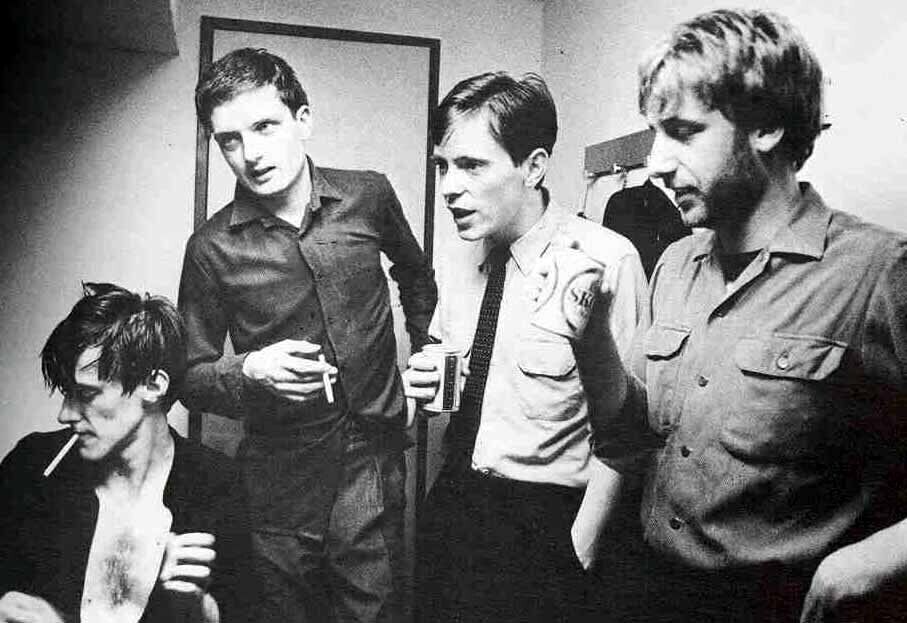New Order's husband-wife duo on Ian Curtis, Bowie, and an era of peace in the band

New Order play in Ireland in October. Picture: Warren Jackson
Now that the dust has settled with ex-band member Peter Hook, the path is clear for New Order to continue with a forthcoming tour that will reach Dublin in October.
With the band affected by deaths, court cases and a very public spat, it’s a miracle they are one of the few Manchester groups never to fully split. For many people, they remain the most significant.
“I like to hope everyone is doing what they want,” says Gillian Gilbert regarding the departure of bass player Hook. “When it all kicked off in 2007, I wasn’t part of it but I knew that Hooky was very unhappy and when you are miserable you shouldn’t stay in that place, that’s what we all felt. They had known each other since [Salford Grammar] school. Hopefully, he is doing what he wants now, we’re doing what we want and it’s all done and dusted I would have thought.”
The cracks first started to appear, at least to the public, over ownership of the iconic nightclub and music venue The Haçienda. “We had been through the courts with the Haçienda,” says Gilbert, “it was just another thing that you couldn’t predict.”
Keyboard player Gilbert joined the band in 1980 after Joy Division came to an end with the tragic loss of singer Ian Curtis to suicide. Her husband, Stephen Morris, has been the drummer for both Joy Division and New Order.
Gilbert has particular empathy for Hook’s predicament, given her own painful departure from the band for a decade in 2001. “It was awful,” she says. “I was devastated that my daughter was ill at the time, but leaving the band was like seeing someone else do your job. I remember Barney [Bernard Sumner] saying they didn’t want keyboards; it was like they were saying they had heard Nirvana. Nirvana had been and gone! It had all gone very macho; it wasn’t New Order. It’s an important part of your life; it’s your whole life. You have your home life and you have New Order."

Gilbert first encountered Joy Division when she was rehearsing with The Inadequates in a next door practice room. “We were punk girls aged about 15 or 16 and saw Joy Division milling around one day. They asked us to come and see them, it was a shock because of the persona they were giving off on stage. They were like a different band, I remember thinking; ‘Yeah this is something’.”
The image of Ian Curtis smoking a Marlboro in a trench coat looking haunted has only added to the mythology around his early death. “It does add to the myth that he died far too young,” adds Stephen Morris. “There was a lot more to it than that. He was a really talented guy, he could have been an author, he could have done all sorts of things.”
Joy Division had already been moving in an electronic direction, inspired by David Bowie’s Berlin period and Iggy Pop’s solo debut, The Idiot. These experimental albums offered a sonic and aesthetic set of values that synchronised well with the Manchester band.
“We were all into the Berlin albums,” Morris says. “Low was fantastic. Also Heroes was another brilliant record. It was stark and that’s what got us, the atmosphere. Maybe it didn’t rain as much but it felt like another decaying city with the bomb sites everywhere in the 70s. There were not as many soldiers in Manchester but it was a very similar ambience.”
While there was a lot of “hatred and distrust” around synthesisers and drum machines in that era, Morris and Sumner were drawn to deploying new technology for Joy Division. Gilbert was even invited to play guitar on stage just as the band we- re moving in that new direction. “It was just the one gig; Ian was supposed to play guitar and I think he cut his hand. They just wanted me for the encore and I thought I’d have a go. Joy Division were getting into tech, Bernard had bought a keyboard and they were doing more of that on Closer, you could feel the change. They wanted Ian to play guitar to free Barney up on keyboards. I think the main thing at the time was Sparks’ ‘The No.1 Song In Heaven’ [produced by Giorgio Moroder] - it was the ultimate up song.”

After the death of Curtis, the band’s manager Rob Gretton didn’t allow time for mourning, fearing they would split. After changing their name to New Order, the remaining members immediately began to work on their first album, Movement. The last tracks Curtis wrote with Joy Division, ‘In A Lonely Place’ and ‘Ceremony’, would point the way forward. Lyrics and vocal duties were initially shared as the band got to work at Strawberry Studios in Stockport.
“I got involved because none of us had any idea about lyrics or singing,” explains Stephen Morris, “It was difficult, we all did a bit of singing and writing lyrics, I quite liked it but I think they are awful now. I’d have a few tins of Carlsberg Special and write a load of rubbish I had no idea what any of it was about, but through doing that I realised how great Ian was and you began to appreciate it even more.”
While Berlin via Bowie and Iggy had helped characterise Joy Division, New York in 1981 was about to play a vital role in the identity of New Order. “It was scary, a bit like the films,” says Morris, ‘Time Square was full of porn cinemas, it wasn’t a place where tourists would go, it wasn’t family friendly at all. If we went to Alphabet City [neighbourhood], people would say: ‘Don’t stay out too late, you get the shootings and murders at night.’ It was terrible at that time. What was interesting was the clubs, we went to places that were playing an eclectic mix of new wave and soul all mixed up with hip-hop and rap.”
In 1983, global smash hit and club classic ‘Blue Monday’ was directly inspired by their experiences in New York and introduced New Order to a new international alternative audience. “We’d had the 'men in macs' up to that point and began to appeal to a lot of different kinds of people,” recalls Morris.
Fellow Mancunian Johnny Marr suggested that Gilbert also brought a certain “feminine cool” to the band. “There was an attitude of ‘what’s a girl doing in the band,” says Gilbert. “It was quite a shock for people because girls weren’t in bands. I’d be behind the drum machine and be ‘a bit technical’ and I liked that.”
New Order’s 1989 album Technique was released during the year-long second summer of love as electronic music was becoming a mainstay of UK youth culture. It’s arguably their most complete long-player and continues to be a coming-of-age fan favourite, but the band have appeared to distance themselves from the record.
“Technique is rather unfairly treated by us," admits Morris, “It’s the anti-Movement record because we had such a good time making it. ‘Vanishing Point’ works great live but Bernard doesn’t want to play certain songs. The fans would love it and I would love to.”
Gilbert hints at other differences of opinion with main man Mr Sumner: “I love ‘Technique’, Bernard thinks it’s unfinished.”
Disagreements are par for the course in New Order, the push and pull over technology, the band’s direction and financial matters have all added grist for the mill.
While New Order could never be described as yacht rock, Bernard Sumner’s other passion outside the band is sailing. Has Morris ever assisted him onboard? “Yes, I have and no I’d never do it again. We were on the boat and it turned into a storm with thunder and lightning, he had no idea where he was, and we thought; ‘This is never going to end’ then we saw planes landing, I said ‘just head for the airport'."
Stormy waters and eventual safe landings - it all sounds a bit like life in New Order.
- New Order play 3Arena Dublin on October 1


